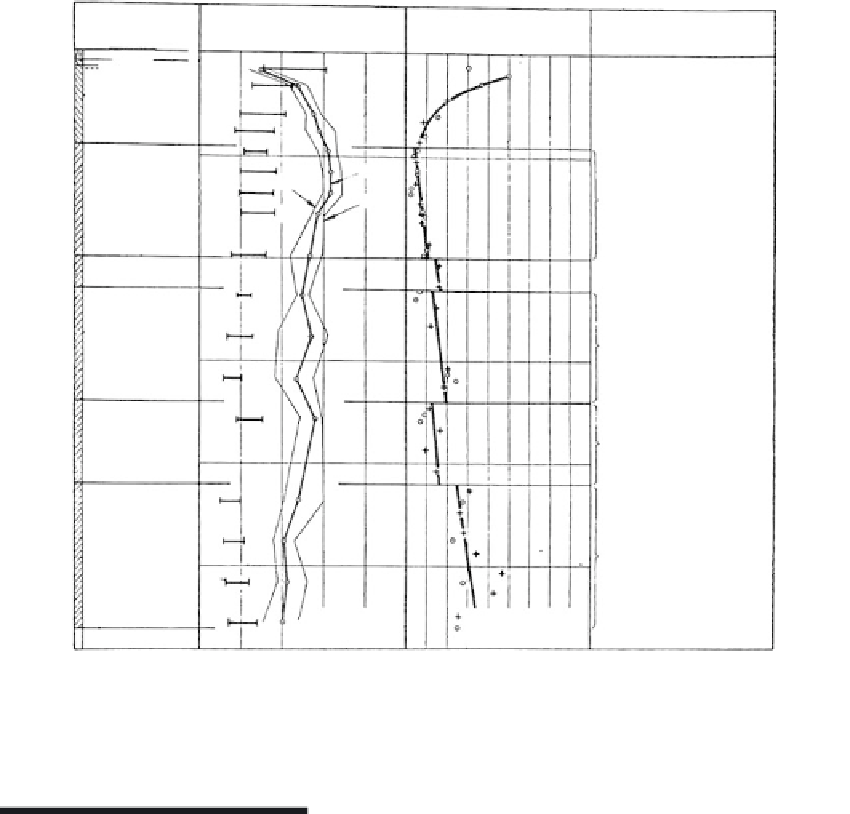Environmental Engineering Reference
In-Depth Information
Shear strength (t/m
2
)
Description
of soil
Topsoil
Water content (%)
Average values
20
30
40
50
12345678
0
GWL
Weathered clay
5
W
average
= 1.85 t/m
2
PL = 19.4%
S
t
= 75
W
min.
W
= 40.0%
LL = 27.7%
c/p = 0.120
W
max.
PL
LL
10
W
= 35.2%
LL = 21.8%
c/p = 0.125
= 1.88 t/m
2
PL = 17.0 %
S
t
= c. 500
Soft clay
extra quick
15
= 1.89 t/m
2
PL = 19.0 %
S
t
= c. 220
W
= 38.0%
LL = 25.5%
c/p = 0.090
20
= 1.93 t/m
2
PL = 15.8 %
S
t
= c. 500
W
= 32.0%
LL = 21.0%
c/p = 0.135
25
Depth in metres
Vane tests
LL = Liquid limit
PL = Plastic limit
Unconfirmed com-
pression tests
FIGURE 7.101
Properties of Norwegian glaciomarine clays from Manglerud in Oslo. Note the high sensitivity as compared
with the clays at Drammen
(Figure 7.102)
,
and the large thickness of the weathered, preconsolidated zone.
(From Bjerrum, L.,
Geotechnique
, 4, 49, 1954. With permission.)
7.7
Secondary Deposits
7.7.1
Introduction
This topic considers secondary deposits as a soil classification by origin to include those
formations resulting from the deposition of new minerals within a primary soil formation,
which result in its hardening. Two broad groups are considered:
•
Duricrusts
: the primary formation is hardened by the inclusion of iron, alu-
minum, carbonate, or silica.
•
Permafrost
: the formation is hardened by ice. Also included is seasonal frost.
7.7.2
Duricrusts
General
Duricrusts are highly indurated zones within a soil formation, often of rock-like consis-
tency, forming normally in the B horizon
(Section 7.8.1),
and can include either laterite,


